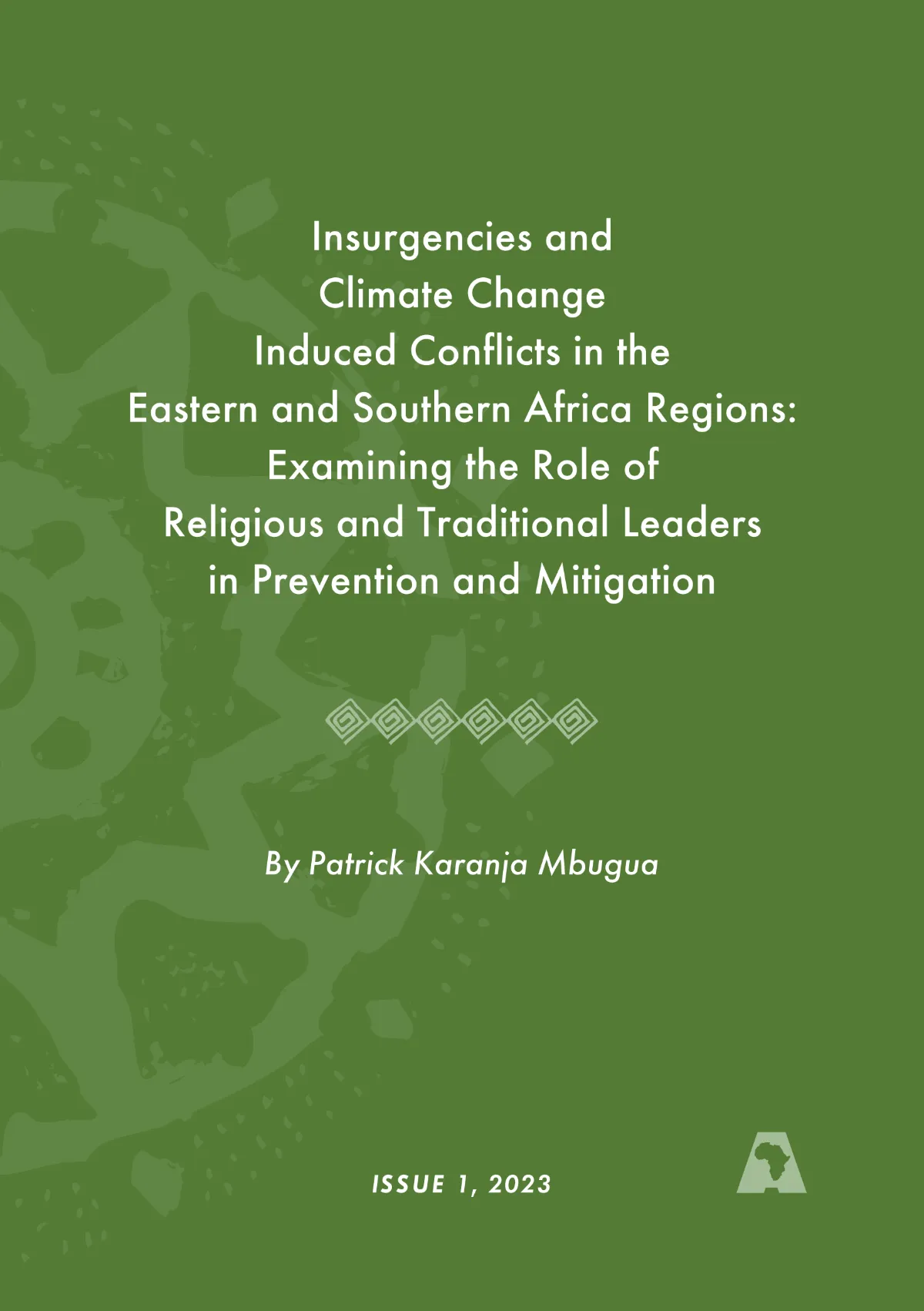
- Occasional Paper Series
Insurgencies and climate change induced conflicts in the eastern and southern African regions: examining the role of religious and traditional leaders in prevention and mitigation
Certain conditions, such as pre-existing armed conflict, latent conflicts and conditions that predispose the population to armed conflict are necessary for climate change to increase the risk or probability of armed conflict.
Climate change is the latest entrant to the long list of challenges that have strained Africa’s peace and security architecture (APSA). Other challenges include armed conflicts, religious-inspired insurgencies, terrorism, forced migration, state fragility, political and economic crises, and the proliferation of small arms and light weapons. The most formidable challenges to Africa’s peace and security mechanisms currently are forced migration and armed conflicts. Interestingly, most writings on climate change argue that there is no sufficient evidence to attribute armed conflicts to climate change; instead, they emphasise that changes in climate patterns increase the probability or multiply the risk of violent conflict. Through a review of academic studies and grey literature – policy documents, research reports, working papers, and media reports – this paper finds that certain conditions are necessary for climate change to increase the risk or probability of armed conflict. These conditions are pre-existing armed conflicts, pre-existing latent conflicts, or pre-existing conditions that predispose the population or some groups in the population, to violent conflict. The paper further finds that there are three pathways to armed conflict once climate change encounters these conditions. First, the effects of climate change worsen livelihoods and push more people into violent conflict in countries with on-going armed conflicts. Second, changes in climate patterns transform pre-existing latent conflicts into violent conflicts. Third, changes in climate patterns worsen livelihoods and force some groups, especially nomadic pastoralists, to migrate to regions inherited by other groups, such as sedentary farmers. This migration leads to tensions and armed conflicts.
Accordingly, religious and traditional leaders use various intervention strategies when responding to climate-related armed conflicts. This paper divides such interventions into three broad categories: Track II diplomacy, mediation, and capacity enhancements. Track II diplomacy activities include ecumenical diplomacy, confidence-building forums, and humanitarian support for survivors of armed violence. Evidence from Eastern and Southern Africa provides instances of such activities.
Meanwhile, mediation occurs at the international, national, and local levels, as evidence from the Eastern and Southern African regions demonstrates. The third category of capacity enhancement involves building resilience and adaptive capacity of the population to cope with the effects of climate change. These findings lead to the following recommendations.
